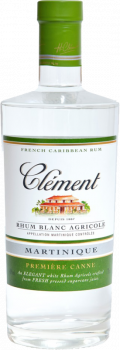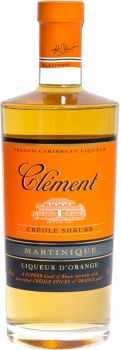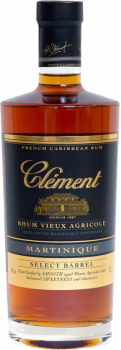Showing 1 to 13 of 13 (1 Pages)
Buy Rum
Rum is an alcoholic beverage produced from the fermentation and subsequent distillation of sugar cane or molasses juice. In our selection, we include bottles produced in Cuba, Spain, Peru and France.
The most determining factors for its specific flavor are the type of yeast used in the fermentation, the distillation method used, the aging conditions to which it is submitted and the mixtures chosen.
The process of making rum
Once the sugar canes are harvested, they are transported to a mill to be cleaned and ground into small pieces to extract the juice. This greenish cane juice is filtered to remove residues and clarified to remove suspended solids, and then heated and passed through evaporators to remove excess water.
This liquid is then subjected to two, sometimes three, boiling processes to condense and form a thick, dark, sugary substance. For its fermentation, yeasts are used which transform the sugar into ethyl alcohol and carbon dioxide.
Depending on the time spent on fermentation - it can be between twelve hours and twelve days - a lighter or thicker rum will be obtained. At the end of this process, a must with an alcohol content of between 5 and 9% is obtained.
The next step is distillation, which eliminates residues and separates the alcohol from the water. This is done by evaporating the alcohol at a different rate and then condensing it. Here, the drink reaches up to 80% alcohol content, which is then reduced with water.
Two methods can be used for distillation: distillation in a still or continuous distillation in columns, depending on how strong and pure the result is.
The ageing time will also be decisive for the characteristics of the rum. The longer the rum is in wooden casks, the more tannins it will absorb, which will give it colour and flavour. The porosity of the wood also gives it oxidative changes.
Types of rum
The particularities of the rum-making process will give it its specific characteristics. There is a great variety of types of rum, among which we can highlight:
- White rum: dry and light, it is characterized by its lack of color (at most, it can have soft dyes of yellow) thanks to a filtering process. It must go through a short aging process - between three months and a year - in oak or cherry wood.
- Golden rum: Its amber color is explained by the fact that it is not filtered, and also by the dye provided by the wood of the barrels where it is aged for a long period of time, usually five years. During this time of aging, part of its alcoholic content is also usually evaporated, so the result is softer.
- Aged rum: usually remains in barrels for between one and five years. It is the most popular drink in the world.
- Old rum: it is the one whose aging does not go below three years.
- ;
- ;
- ;
- ;
- ;
- ;
- ;
Buy Rum
Rum is an alcoholic beverage produced from the fermentation and subsequent distillation of sugar cane or molasses juice. In our selection, we include bottles produced in Cuba, Spain, Peru and France.
The most determining factors for its specific flavor are the type of yeast used in the fermentation, the distillation method used, the aging conditions to which it is submitted and the mixtures chosen.
The process of making rum
Once the sugar canes are harvested, they are transported to a mill to be cleaned and ground into small pieces to extract the juice. This greenish cane juice is filtered to remove residues and clarified to remove suspended solids, and then heated and passed through evaporators to remove excess water.
This liquid is then subjected to two, sometimes three, boiling processes to condense and form a thick, dark, sugary substance. For its fermentation, yeasts are used which transform the sugar into ethyl alcohol and carbon dioxide.
Depending on the time spent on fermentation - it can be between twelve hours and twelve days - a lighter or thicker rum will be obtained. At the end of this process, a must with an alcohol content of between 5 and 9% is obtained.
The next step is distillation, which eliminates residues and separates the alcohol from the water. This is done by evaporating the alcohol at a different rate and then condensing it. Here, the drink reaches up to 80% alcohol content, which is then reduced with water.
Two methods can be used for distillation: distillation in a still or continuous distillation in columns, depending on how strong and pure the result is.
The ageing time will also be decisive for the characteristics of the rum. The longer the rum is in wooden casks, the more tannins it will absorb, which will give it colour and flavour. The porosity of the wood also gives it oxidative changes.
Types of rum
The particularities of the rum-making process will give it its specific characteristics. There is a great variety of types of rum, among which we can highlight:
- White rum: dry and light, it is characterized by its lack of color (at most, it can have soft dyes of yellow) thanks to a filtering process. It must go through a short aging process - between three months and a year - in oak or cherry wood.
- Golden rum: Its amber color is explained by the fact that it is not filtered, and also by the dye provided by the wood of the barrels where it is aged for a long period of time, usually five years. During this time of aging, part of its alcoholic content is also usually evaporated, so the result is softer.
- Aged rum: usually remains in barrels for between one and five years. It is the most popular drink in the world.
- Old rum: it is the one whose aging does not go below three years.





